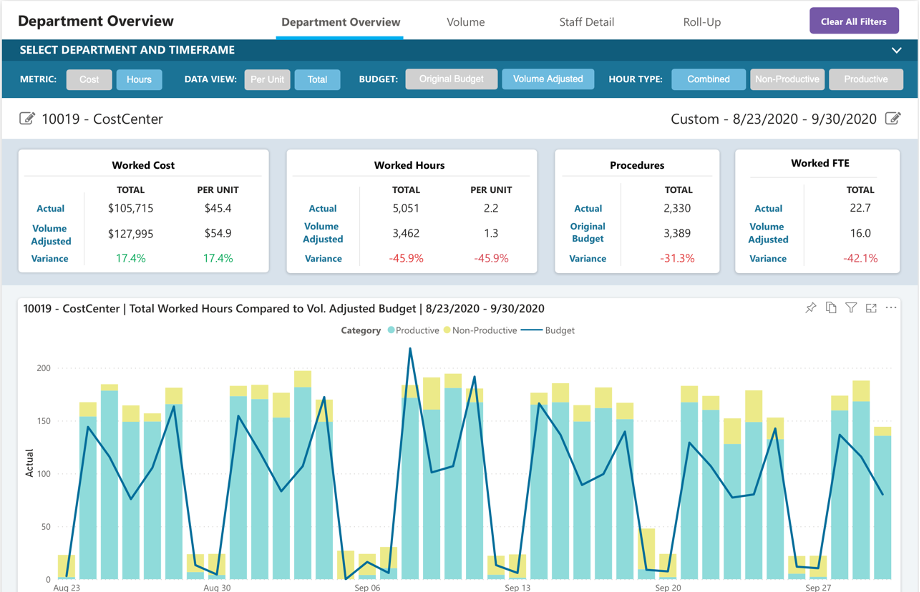To cut costs, healthcare leaders are looking at their greatest operating expense—labor management. However, with outdated labor management systems, decision makers rely on retrospective, incomplete data to forecast staffing volumes and patient support needs. Limited workforce insight can result in misaligned staffing or worse, jeopardizing patient care due to lack of labor support. With the Health Catalyst PowerLabor™ application, part of the Financial Empowerment Suite™, decision makers have access to a comprehensive view of labor data by organization, department, team, and job role. Timely insight into current and future hospital needs allows leaders to staff to patient volume, control escalating labor expenses, and ensure optimal resources for excellent patient care.
 Download
Download

Labor encompasses nearly 50 percent of hospital costs, and, as the greatest healthcare operating expense, understanding and managing this cost is critical. Increasing financial pressures—heightened by the pandemic—highlight the urgency of controlling escalating labor costs. Using accurate data, organizations can pinpoint areas where staffing hours exceed or fall short of patient needs, allowing leaders to quickly recalibrate without compromising the quality of care delivery. Unfortunately, most health systems lack access to timely, augmented intelligence (AI)-empowered data, forcing a reliance on retrospective data that fails to deliver actionable insights.
To eliminate waste and reduce costs, leaders should turn to the largest operating expense within their control—labor management. However, many decision makers still rely on obsolete systems that lack the tools to effectively inform staffing decisions. As a result, leaders use retrospective and inaccurate data to guess future patient volumes and staffing needs. These untimely and inefficient insights misalign staffing hours with patient needs and waste precious healthcare dollars and limited resources while potentially compromising quality of care.
Homegrown healthcare labor management systems also fall short because they lack the infrastructure to aggregate large amounts of labor data from different source systems including payroll, EMR, and time and attendance—a roadblock to delivering a complete picture of workforce needs. This means end users rely on manually collated labor reports and fragmented datasets to guide staffing decisions with little valuable insight or ability to forecast. These siloed decisions result in guesswork that’s not a sustainable solution as healthcare labor management challenges increase.
The PowerLabor application, part of the Health Catalyst Business Decision Support™ solutions , provides a comprehensive AI-enabled view of labor data by organization, department, team, and job role. The embedded AI forecasting predicts patient volumes, allowing for more proactive resource scheduling. With timely insight into future hospital needs, leaders can close the gap between required staffing and future patient volumes, control labor expenses, and track progress toward meeting budget and staffing targets while ensuring resources for excellent patient care.
PowerLabor features include the following:

Figure 1: Labor expenses dashboard.
The PowerLabor application combines advanced technology, AI, and expertise to ensure organizations have optimal resources to deliver excellent patient care. With an AI-powered, comprehensive view of healthcare labor data, leaders can adjust staffing decisions that reduce costs, identify over- and understaffed areas, and understand exact staffing volumes that support patient needs. PowerLabor empowers decision makers to address 60 percent of their operating expenses effectively, allowing them to break free of the cycle of reactivity and be proactive leaders for their organizations.
Would you like to learn more about this topic? Here are some articles we suggest:
Would you like to use or share these concepts? Download this presentation highlighting the key main points.